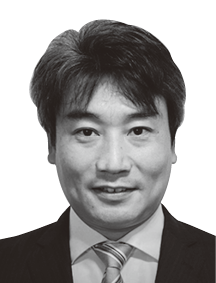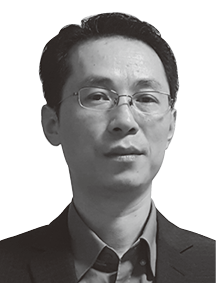The recent spread of novel coronavirus has impacted the creation of smart cities by requiring them to ensure the safety and security of city residents while improving their QoL. The methods of overcoming these challenges have also become more complex. Hitachi has responded by working closely with local partners such as government agencies and real estate industry in Southeast Asia and Australia. The objectives are to identify region-specific challenges of public concern through customer collaborative creation, and using proprietary digital technologies to work on overcoming these challenges. Hitachi will draw on these partnerships to continuously improve city value through collaborative creation with various stakeholders.



Cutting-edge technologies such as the Internet of Things (IoT) and artificial intelligence (AI) are recently being used to enable more efficient and advanced functions and services for cities, and to provide approaches for overcoming various challenges. Countries around the world are also using these technologies to work on smart facilities that create new value in areas such as comfort and convenience. Typical examples include a full-scope IoT smart city in Barcelona, and the Songdo public-private-partnership/third-sector smart city in South Korea. At Kashiwa-no-ha, a smart city project in Chiba Prefecture, Hitachi has accomplished a mission to provide efficient use, monitoring, and control of local energy. Improving the quality of life (QoL) of city residents has been the most important challenge for these conventional smart city projects.
The recent spread of the novel coronavirus has elevated the importance of social distancing, contact tracing, and other areas of safety and security. It has also restricted people’s activities and led many companies to encourage employees to work remotely. The result has been that various city functions previously tied to particular places (offices, commercial facilities, or residences) can now be provided from anywhere in a location-independent manner that is transforming cities.
In commercial facilities for example, this transformation is creating a need to maximize the value of the shopping experience while ensuring social distancing. The increasingly complex methods used to overcome today’s challenges are creating a need for approaches that use digital technologies to provide safety and security by visualizing and analyzing various types of data. These data can then be brought together for comprehensive analysis that generates new value and continuously enhances the value of real property. Hitachi is responding to this need by creating digital smart cities that improve QoL while maintaining a balance among each area of value (city safety, security, resilience, and the environment). These cities are created by collecting various types of data about physical-space elements such as buildings, assets, and shopping behaviors. The data are then used for comprehensive analysis, simulations and visualizations in cyberspace (see Figure 1). To build these types of large systems, the work starts with optimization of individual systems used for facility management and security management. These systems are then linked with customer experience management while constructing an integrated management system and improving QoL (see Figure 2).
This section describes Hitachi’s work on creating digital smart cities in Southeast Asia and Australia, focusing on the role of customer collaborative creation (co-creation).
Smart Nation Singapore is a smart city policy that the government of Singapore has been pursuing since 2014. It calls for the use of digital technologies and data to solve many of the problems the country faces, while generating innovations and improving the lives of Singaporeans. The government has led the way in creating demonstration test sites, and the country is well suited for verifying the challenges facing smart cities. Hitachi is working on creating closer ties to Singapore’s government agencies and educational institutions, while demonstrating digital solutions to be applied in Association of Southeast Asian Nations (ASEAN) countries.
Due to the hot and humid tropical climate in Southeast Asian countries, a relatively large share of energy consumption is expended on air conditioning used to keep occupant comfortable. Reducing building energy consumption while maintaining comfort is a regional societal challenge tied to sustainable urban development and QoL preservation in the region. Singapore has set a goal to green 80% of its buildings by 2030.
To contribute to a carbon-free society, Hitachi has been commissioned by Singapore’s Building and Construction Authority (BCA) to develop a platform called the Super Low Energy Building (SLEB) Smart Hub(1). The platform will be the first digital knowledge center in Singapore for green buildings in the region, as well as a national database that collates and analyses green technologies. Beyond being a data repository, its smart adviser recommends suitable green technologies and predicts the associated costs and energy savings, using cutting-edge big data analytics and AI techniques based on a building’s current data set and user’s requirements. Since launched in September 2019, it has benefited more than 90 companies.
Figure 3 — Example of Digital Twin for Smart Building
 The digital twin coordinates multiple subsystems in the building to increase energy consumption efficiency while improving the occupants’ comfort at the same time.
The digital twin coordinates multiple subsystems in the building to increase energy consumption efficiency while improving the occupants’ comfort at the same time.
Modern buildings are equipped with advanced technologies for individual sub-systems such as air conditioning, lighting, power plugs, and elevators. However, these technologies work independently, and are not tailored for user conditions or individual comfort needs. Hitachi has received a two-year national research grant from the government of Singapore to develop a smart building and digital twin solution, leveraging IoT and AI technologies. The solution will coordinate the control of multiple building sub-systems to enable human-centric automated building management solutions and adapts to the building dynamics based on the functions of spaces, occupant activities, and personal comfort (see Figure 3).
Hitachi is also working on digital transformation of the real estate industry in the Asia-Pacific region in association with the real estate developer and property management company Frasers Property Limited(2). The project will initially involve research on business opportunities in Singapore, Thailand, and Australia. In the future, it will grow to encompass joint development and investment in new services. Hitachi has previously worked on new business model generation, technologies for increasing real estate value over multiple generations, improving happiness, and developing infrastructure as a service (IaaS) that provides an outstanding user experience. The company is also working on One Bangkok, a project to construct Thailand’s first human-centered fully integrated smart city providing a sustainable and pleasant living experience. The achievements made possible through co-creation will also be used for One Bangkok equipment management and operation.
City services in a wide range of areas such as security, equipment maintenance, and public sanitation will need to be handled in an integrated manner in the coming years, calling for solutions that can flexibly adapt to operations in each area. Hitachi is responding by developing an incident management system that detects incidents in real time from video information and IoT sensor information, generates a workflow tailored to each incident, and automatically sends out response staff (see Figure 4). The system will handle scheduled events such as periodic maintenance, while also enabling priority allocation of resources to events requiring emergency responses. The technologies being developed will eventually be integrated to provide integrated management encompassing building energy management and human resources placement, as well as complex operation management on scales ranging from individual buildings to entire cities.
Figure 4 — Example Screens in Incident Management System
 Shown here are a multitasking workflow generation screen (left) and staff dispatching optimization screen (right).
Shown here are a multitasking workflow generation screen (left) and staff dispatching optimization screen (right).
As of 2020, Australia had a population of about 25 million and the figure is expected to grow by about 40% over the next 20 years. A group of Australian government agencies at the federal, state, and local levels is responding to this rapid population growth by developing nine smart cities(3). One of the largest is the Western Sydney development in New South Wales. The development coincides with the construction of a new airport, and will aim to create a neighborhood housing over 1.5 million new residents over the next 20 years. The project will need to provide public infrastructure such as power grids, transportation networks, and healthcare. It will also need to create new jobs and develop industries such as cutting-edge manufacturing, aviation, and agriculture with advanced distribution networks for producing and providing high-quality foods.
Hitachi and the state of New South Wales agreed in October 2019 to create Kyōsō Centre, a facility for promoting open innovation in Western Sydney(4). Kyōsō Centre is being approached as an “Airport for Excellence” (a second airport for the region). It will aim to compile knowledge from around the world and work with co-creation partners to overcome challenges facing the region, while releasing the superior solutions it creates worldwide (see Figure 5)(5). The Centre’s activities will assist the growth of local startups and small and medium-sized enterprises (SMEs), helping economic growth and job creation in the region.
The Kyōsō Centre is scheduled to open in 2023, but began co-creation activities in 2020 in advance of its opening. It held a digital mobility-themed hackathon in Sydney in February 2020(6). The students on the winning team were granted internships in the form of admission to an accelerator program. The Centre wants to use these types of activities to aid the creation of businesses with novel themes. In May 2020, the Centre announced the signing of a memorandum for promoting innovation with the major Western Sydney suburb of Liverpool and the South Western Sydney Local Health District (SWSLHD). These types of activities will enable the Centre to create an ecosystem with various stakeholders in Australia, while helping improve QoL through digital smart city development.
Figure 5 — Western Sydney Kyōsō Centre’s Airport for Excellence Concept
 The Kyōsō Centre is being approached as a second airport for Western Parkland City. It will bring together best practices in areas such as manufacturing and distribution, and work to overcome the challenges facing the region together with collaborative creation (co-creation) partners. The digital solutions developed through co-creation will be exported to the world.
The Kyōsō Centre is being approached as a second airport for Western Parkland City. It will bring together best practices in areas such as manufacturing and distribution, and work to overcome the challenges facing the region together with collaborative creation (co-creation) partners. The digital solutions developed through co-creation will be exported to the world.
This article described Hitachi’s work on digital smart cities in Southeast Asia and Australia, focusing on the role of customer co-creation in each region.
Since challenges of public concern vary by region, working closely with local partners and identifying the services in genuine demand are crucial requirements for creating human-centered digital smart cities.
Lumada Solution Hub is a collection of solutions and application development environments provided by Hitachi on a cloud platform. It brings together Hitachi’s portfolio of technologies and expertise accumulated through customer co-creation, cataloging and packaging each solution for ready implementation(7). When working on digital smart cities, common features of solutions developed for particular regions will be extracted and added to Lumada Solution Hub, allowing them to be rapidly applied to other regions facing similar challenges.
Customer co-creation sites created at different centers will be used for co-creation with various stakeholders to connect different areas of data and services, construct integrated management systems, and create digital smart cities that continuously enhance city value.